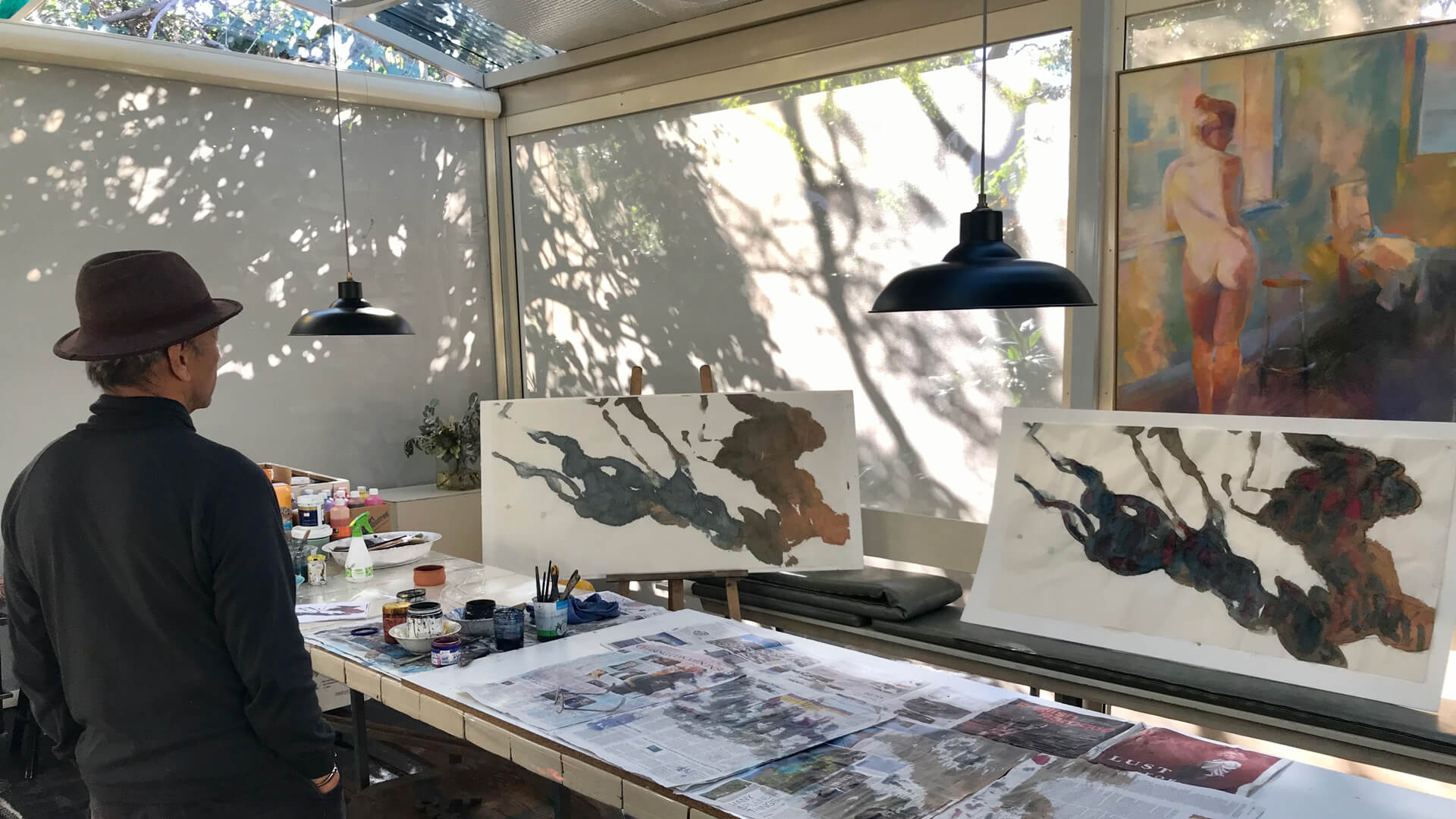

Ian de Souza did not follow a religious career but has sustained a spiritual life. His first choice was an artistic life, but he became a singer musician. It was not until 1981, in mid-life that he took up his desired vocation as an artist and sought to teach himself the secrets and techniques of water colour.
"But nothing is wasted... From music, I learned the importance of rest, of understanding time must be taken before return, before response"
Returning to a place he knew, a provincial Australian city, Ian de Souza began to build a walled Singaporean sanctuary, a kampong house, a garden and studio; a walled Eurasian refuge.
Like Carl Jung building his tower, the artist built his kampong sanctuary himself - the limestone walls, the rooms open to the air and light, places for sleeping out of doors, the paved courtyards. He planted trees that dapple shade, built pooling water ponds, spaces that hold his collections of his most significant artworks and sculpture.
"Re-evaluation of earlier work and my memories are important to inspiration"
From the desert journey, he crafted his artist's studio from an old railway carriage, his dining table runs from indoors into his garden on railway lines embedded in the paved courtyard.
And all the while, he painted, perfecting his skills as a water colourist.
"Art requires a state of minimal distraction. The physical work of building creates balance between the body and the mind."
The artist's house and studio garden is an Eurasian compound in an Australian port city: a place for cooking, conversations, artistic exploration; an enclave where art lovers are welcomed for the biennial Artwalk Freo and where he has held studio art workshops for almost 30 years. Within the compound, two worlds are quietly balanced. Throughout each day and night, the trees he planted throw reflected shadows into his open rooms tracing time passing.
Ebb and Flow: Light and shadow are integral to his artist's vision.